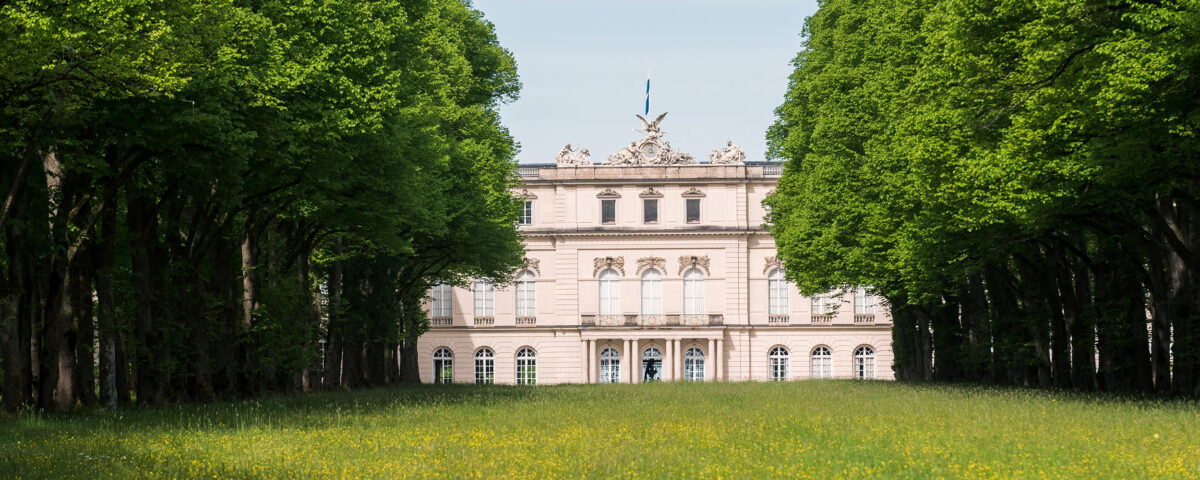
Island Herrenchiemsee
There was a monastery on Herreninsel as early as the 7th Century. According to monetary history however, it was Duke Tassilo III. who founded the monetary church “St. Salvator auf der Au” in 782 and gave it to the Benedictine monks. After the fall of the last of the Agliofings, Duke Tassilo III, Charles the Great (788) placed the monastery into the care of the Bishop of Metz for a short period. But by 891 it had come under the archbishopric of Salzburg. Monasteries in the middle ages weren’t just important cultural hubs, they were also economic and political centres. Monks had gained a large amount of land ownership by deforestation, cultivation and donations. They were also responsible for special judicial and administrative tasks, which were carried out by a reeve.
After a period of decline from the mid 10th Century, the monastery was re-established in 1130 by Archbishop Conrad I of Salzburg as an Augustine Canons Regular establishment. In 1215, Salzburg set up the Salzburger Chiemsee Bishopric, which has its main seat on the island. However, the bishop had to reside in Salzburg’s Chiemseehof. The monastery’s church, dedicated to St. Sixtus and St. Sebastian, was made into a cathedral and the construction of the three-part Roman basilica was completed in 1158. Between 1676 and 1678 a new island cathedral was constructed in the beautiful baroque style (partly destroyed after 1803). In several steps between 1645 and 1730, the spacious monastery complex was extended to include the emperor’s hall, which was painted by the Munich painter Benedikt Albrecht between 1713 and 1715 (not accessible).
In around 1738. Munich’s court architect and master stucco plasterer Johann Baptist Zimmermann created the dual-naived library. This section of the monastery is now a hotel, was built between 1737 and 1740.
In 1803 the monastery was abandoned on the back of secularization and was placed in private hands. The cathedral was partly destroyed and made into a brewery. After the island changed hands several times, King Ludwig II finally bought the island in 1873 for 350,000 florins from wood traders from Baden-Württemberg. In 1874, the King had individual rooms in the monastery renovated so he had somewhere to stay during his stays on the island. These rooms were recently restored and made accessible to the public (Augustine monastery museum, which includes galleries of art by J. Exter and various other Chiemsee painters). After first preparations were completed, the cornerstone for the King’s palace was laid on May 21, 1879. After the death of Kind Ludwig II on June 13, 1886, all work on the palace and its sister buildings was suspended and no work was carried out on the island until around 1888. The palace garden post was set up, ensuring the palace gardens and agriculture on the island was maintained.
To mark the 100 year anniversary of his death in 1986, the newly designed King Ludwig II Museum was opened in the unfinished rooms in the palace’s south wing. The palace is surrounded by an extensive park with fountains and gardens, which took its inspiration from the park in Versailles. However, major progress on improving and restoring the gardens was not made until 1970. Between 1972 and 1994, the 7 trick fountains were lovingly reproduced step by step. There has been intensive reconstruction work on the lower garden since 1980 and from 1993 to around 2000, the reconstruction of the canal on the west side of the island was completed.
The rest of the island is nowadays a nature reserve with rich mixed deciduous forest. The island is criss-crossed with walking paths which offer breathing views of the lake, the mountains beyond and of course of Fraueninsel. The official walking route round the island is 7 km in length and takes a good two and a half hours to circumnavigate.
